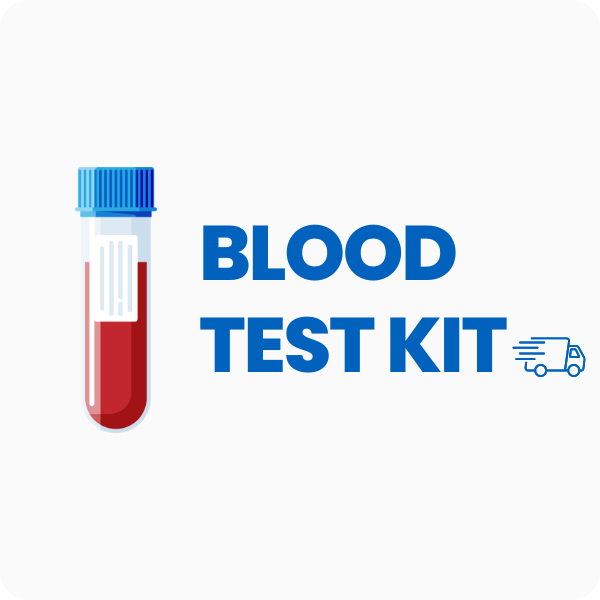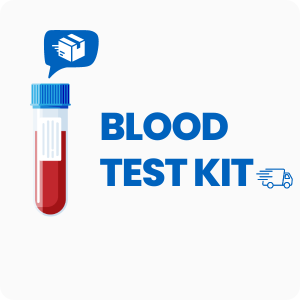| Test Name | Reference Range | Significance | High Levels of Food Intolerance Test (IgG Antibodies Bloodspot) |
|---|---|---|---|
| Dairy | |||
| Casein | < 2.0 | Casein is a protein in milk. High IgG levels may indicate a delayed immune response to dairy products. | High levels of Casein mean your immune system may react to dairy, causing symptoms like bloating or skin issues. |
| Cow’s Milk | < 2.0 | Measures immune response to cow’s milk. High IgG may be linked to digestive or skin symptoms after consuming milk. | High levels of Cow’s Milk mean you may have a delayed reaction to cow’s milk. |
| Goat’s Milk | < 2.0 | Assesses immune response to goat’s milk. High levels may suggest sensitivity to non-cow dairy. | High levels of Goat’s Milk mean you may react to goat’s milk. |
| Cheddar Cheese | < 2.0 | Checks for delayed immune response to cheddar cheese proteins. | High levels of Cheddar Cheese mean cheddar cheese may trigger symptoms. |
| Cottage Cheese | < 2.0 | Measures IgG response to cottage cheese, which can help identify dairy-related symptoms. | High levels of Cottage Cheese mean cottage cheese may cause delayed symptoms. |
| Yogurt | < 2.0 | Assesses immune response to yogurt proteins, which can be different from milk or cheese. | High levels of Yogurt mean yogurt may trigger delayed symptoms. |
| Lactalbumin | < 2.0 | Lactalbumin is a milk protein. High IgG may indicate sensitivity to this specific part of dairy. | High levels of Lactalbumin mean you may react to lactalbumin in dairy. |
| Egg | |||
| Egg White | < 2.0 | Measures immune response to egg white proteins, which can cause digestive or skin symptoms. | High levels of Egg White mean egg whites may cause delayed symptoms. |
| Egg Yolk | < 2.0 | Assesses IgG response to egg yolk, which is different from egg white sensitivity. | High levels of Egg Yolk mean egg yolks may trigger symptoms. |
| Grains & Gluten | |||
| Wheat | < 2.0 | Measures delayed immune response to wheat, which can cause digestive or joint symptoms. | High levels of Wheat mean wheat may trigger symptoms. |
| Gluten | < 2.0 | Assesses immune response to gluten, a protein in wheat, barley, and rye. | High levels of Gluten mean gluten may cause delayed symptoms. |
| Oat | < 2.0 | Checks for immune response to oats, which can be a hidden source of symptoms. | High levels of Oat mean oats may trigger symptoms. |
| Rye | < 2.0 | Assesses delayed immune response to rye, another common grain. | High levels of Rye mean rye may cause symptoms. |
| Corn | < 2.0 | Measures immune response to corn, which is found in many processed foods. | High levels of Corn mean corn may trigger symptoms. |
| Buckwheat | < 2.0 | Assesses immune response to buckwheat, a gluten-free grain alternative. | High levels of Buckwheat mean buckwheat may cause symptoms. |
| Nuts & Seeds | |||
| Almond | < 2.0 | Measures immune response to almonds, which can cause delayed symptoms in some people. | High levels of Almond mean almonds may trigger symptoms. |
| Peanut | < 2.0 | Assesses delayed immune response to peanuts, which is different from immediate allergy reactions. | High levels of Peanut mean peanuts may cause symptoms. |
| Pecan | < 2.0 | Checks for immune response to pecans, which can be a hidden source of symptoms. | High levels of Pecan mean pecans may trigger symptoms. |
| Walnut | < 2.0 | Assesses immune response to walnuts, which can cause delayed symptoms. | High levels of Walnut mean walnuts may cause symptoms. |
| Sesame | < 2.0 | Measures immune response to sesame seeds, which are found in many foods. | High levels of Sesame mean sesame may trigger symptoms. |
| Sunflower Seed | < 2.0 | Assesses immune response to sunflower seeds, which can be a hidden source of symptoms. | High levels of Sunflower Seed mean sunflower seeds may cause symptoms. |
| Fruits & Vegetables | |||
| Apple | < 2.0 | Measures immune response to apples, which can cause delayed symptoms in some people. | High levels of Apple mean apples may trigger symptoms. |
| Banana | < 2.0 | Assesses immune response to bananas, which can be a hidden source of symptoms. | High levels of Banana mean bananas may cause symptoms. |
| Strawberry | < 2.0 | Measures immune response to strawberries, which can cause delayed symptoms. | High levels of Strawberry mean strawberries may trigger symptoms. |
| Tomato | < 2.0 | Assesses immune response to tomatoes, which can be a hidden source of symptoms. | High levels of Tomato mean tomatoes may cause symptoms. |
| Potato, White | < 2.0 | Measures immune response to white potatoes, which can cause delayed symptoms. | High levels of Potato, White mean white potatoes may trigger symptoms. |
| Potato, Sweet | < 2.0 | Assesses immune response to sweet potatoes, which can be a hidden source of symptoms. | High levels of Potato, Sweet mean sweet potatoes may cause symptoms. |
| Meat, Fish & Shellfish | |||
| Beef | < 2.0 | Measures immune response to beef, which can cause delayed symptoms in some people. | High levels of Beef mean beef may trigger symptoms. |
| Chicken | < 2.0 | Assesses immune response to chicken, which can be a hidden source of symptoms. | High levels of Chicken mean chicken may cause symptoms. |
| Pork | < 2.0 | Measures immune response to pork, which can cause delayed symptoms. | High levels of Pork mean pork may trigger symptoms. |
| Salmon | < 2.0 | Assesses immune response to salmon, which can be a hidden source of symptoms. | High levels of Salmon mean salmon may cause symptoms. |
| Shrimp | < 2.0 | Measures immune response to shrimp, which can cause delayed symptoms. | High levels of Shrimp mean shrimp may trigger symptoms. |
| Crab | < 2.0 | Assesses immune response to crab, which can be a hidden source of symptoms. | High levels of Crab mean crab may cause symptoms. |
| Other Foods & Additives | |||
| Yeast (Food) | < 2.0 | Measures immune response to food yeast, which can be found in bread and baked goods. | High levels of Yeast (Food) mean yeast may trigger symptoms. |
| Cane Sugar | < 2.0 | Assesses immune response to cane sugar, which can be a hidden source of symptoms. | High levels of Cane Sugar mean cane sugar may cause symptoms. |
| Chocolate | < 2.0 | Measures immune response to chocolate, which can cause delayed symptoms. | High levels of Chocolate mean chocolate may trigger symptoms. |
| Coffee | < 2.0 | Assesses immune response to coffee, which can be a hidden source of symptoms. | High levels of Coffee mean coffee may cause symptoms. |
| Total IgE | |||
| Total IgE | 0-100 | Total IgE measures the overall level of allergy-related antibodies in your blood, which can indicate a general tendency toward allergic reactions. | High levels of Total IgE mean you may have a higher risk of allergic reactions to foods or environmental triggers. |
Medical Review Board
Reviewed by Jeff Donohue M.D. from Body Logic and Brady Hurst DC, CCCN. Written by True Health Lab’s team of editorial health contributors.
Disclaimer: This information is for educational purposes only and not intended as medical advice. Consult your healthcare provider for personalized guidance.
Why Customers Trust True Health Labs – What People are saying
Also rated 4.6 out of 5 based on 3452 ShopperApproved reviews- See all TrueHealthLabs.com reviews.









